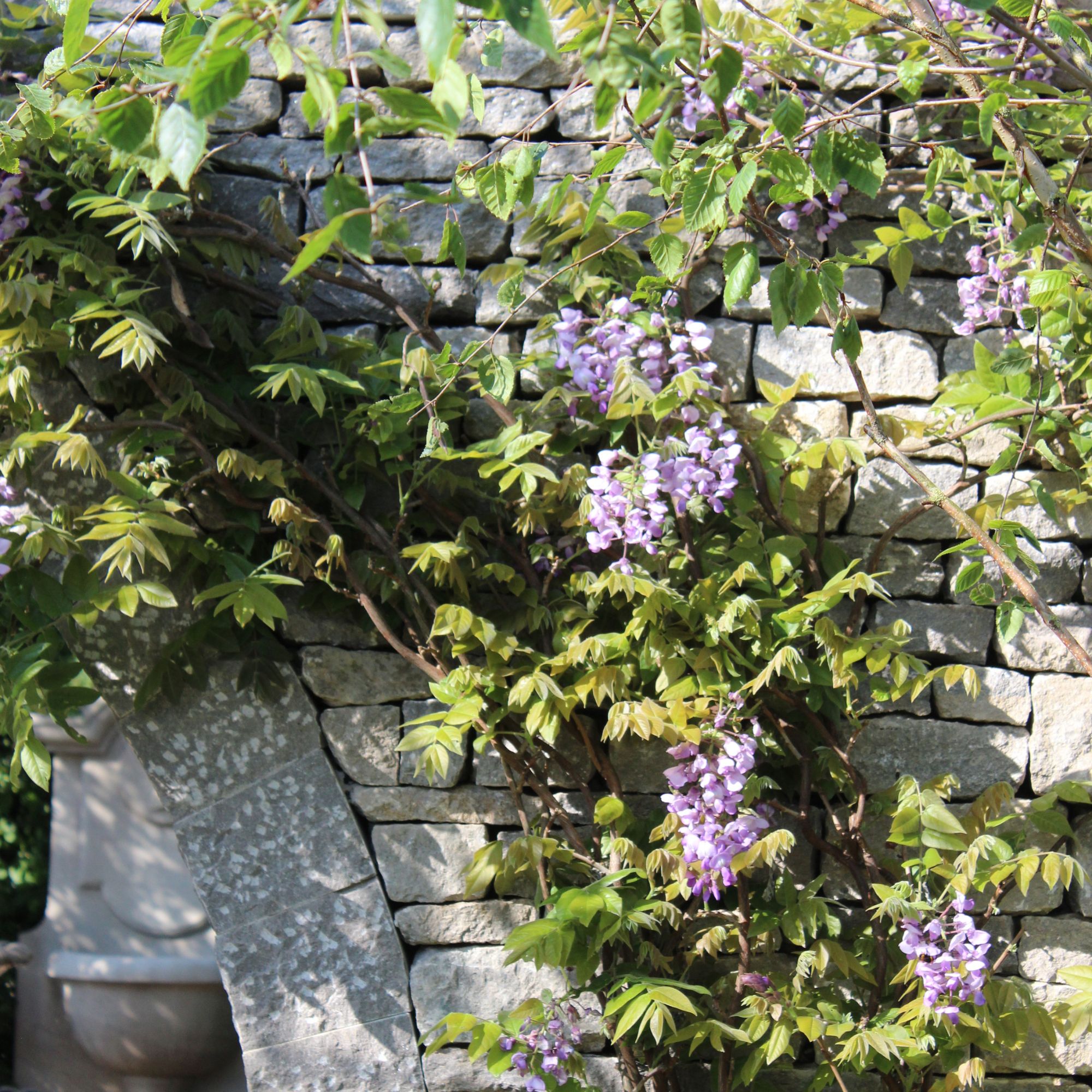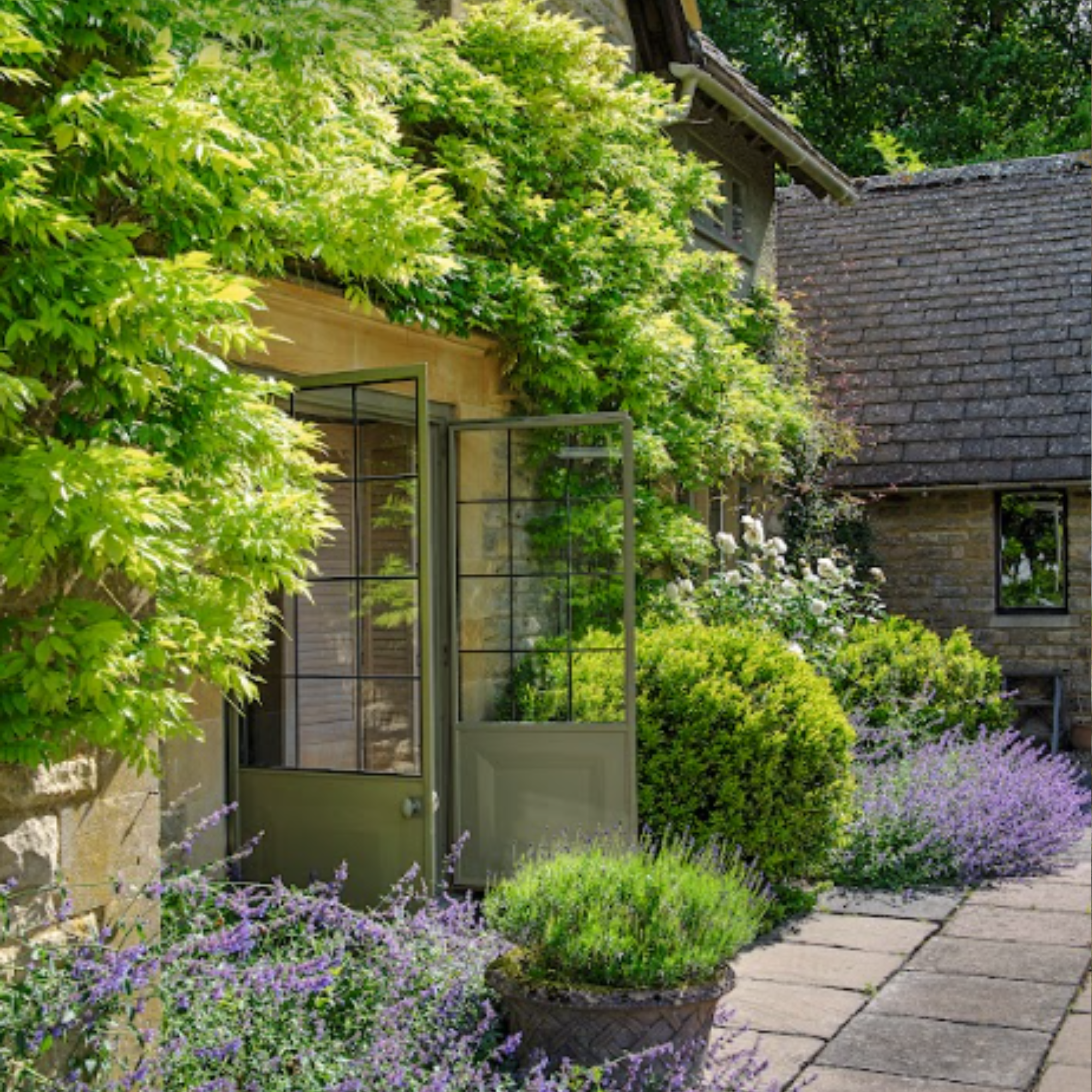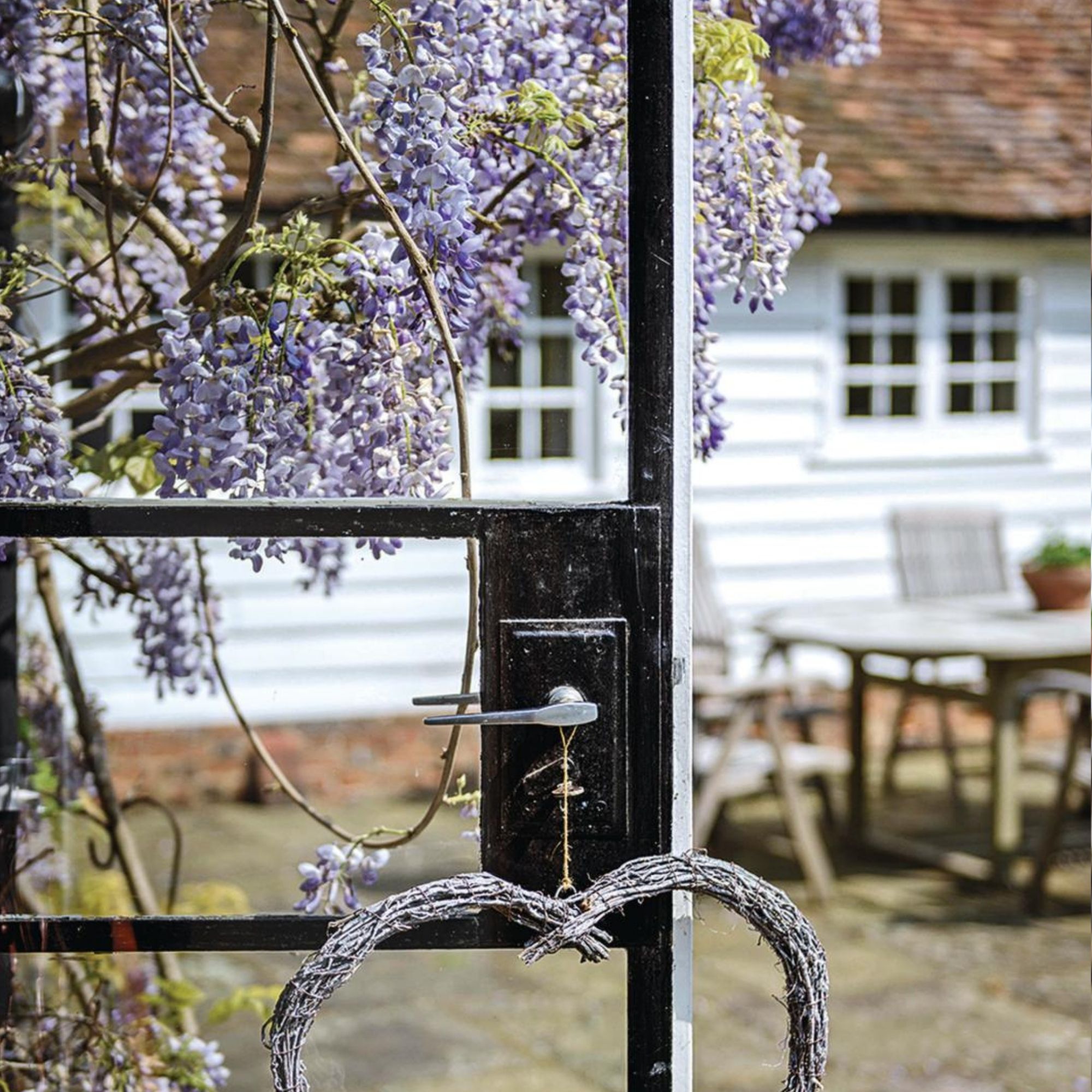
Learning how to grow wisteria in pots will pay dividends in the spring – it's the ideal way to decorate walls, fences and trellises with cascading purple blooms.
Once you know when to plant wisteria, you can get started – you'll just need to make sure you have space against a structure like a fence or trellis, along which you can train your wisteria.
We've thrown together a guide on how to grow wisteria in pots, with invaluable expert tips to help you along the way.
What you'll need
Before you learn how to grow wisteria in pots, you'll need a few essentials.
- A flowering wisteria plant, such as Wisteria sinensis (Chinese wisteria) from Waitrose.
- American Wisteria, like Wisteria frutescens 'Amethyst Falls' from Crocus, is also a good option for anyone who wants a tamer plant.
- A large pot or container of at least 45cm (18in). You can find a good selection of plant pots at Homebase.
- A bag of good loam-based potting compost, such as John Innes No. 3 on Amazon.
- A hand trowel like the Spear & Jackson Elements Carbon Hand Trowel from Amazon.
- A liquid tomato fertiliser like Levington Tomorite from Amazon, or similar flowering plant food.
- A pair of sharp, clean secateurs, such as these Felco Secateurs from Amazon.
1. Choose the largest pot you have space for

How well does Wisteria grow in pots? Well, Wisteria boast a complex root system, so you will need to select the largest pot you have space for if you want yours to thrive.
'When you're thinking about putting wisteria in a pot, the most crucial thing is to go for a really substantial container,' says Mark Dwelly, head gardener at Audley Villages. 'They are vigorous climbers and need plenty of room for their root system to develop and spread out.
'A small pot will quickly become root-bound, and the plant won't thrive or flower properly.'
2. Don't scrimp on the compost

Now you've got your container, you'll need to find the right compost to fill it with.
'Above all else, you want to make sure your pot can hold a good quality compost, such as Compost King, that has slow-release food added in,' says Chris Bonnett, founder of GardeningExpress.co.uk. 'Wisteria are hungry plants so a good quality compost is essential.'
You'll also need to make sure your container offers enough drainage.
'If the drainage holes are particularly large, it pays to place a few ‘crocks’ over them (pieces of tile or terracotta pot) to stop your compost from escaping,' adds Morris Hankinson, director of Hopes Grove Nurseries.
3. Pay attention to planting levels and support

There are a few things you need to think about when planting your Wisteria in a pot or container.
First, consider the planting level. 'Be sure to plant at the same depth as the plant was in the pot you bought it in,' advises Morris.
You'll also need to support your potted wisteria plant. 'Wisterias are natural climbers, so you will definitely need to provide a good, strong support for them to scramble up,' says Mark from Audley Villages.
'A small garden trellis that's firmly secured in the pot is ideal. This will give the twining stems something to grip onto as they grow.'
4. Stick to a regular feeding schedule

Wisteria thrives in sunlight, so be sure you’re placing your pot somewhere that provides your climbing plant with at least six hours of sunlight a day. And remember: wisteria are incredibly hungry plants, so they will need to be fed and watered regularly if you truly want them to thrive.
'It’s important to accommodate your wisteria in its growing season with a high potash fertiliser,' says Chris, noting that you should do this monthly.
'You’ll also need to water the plant daily in order to keep the soil moist.'
Morris adds: 'Your wisteria will appreciate a good feed each spring, so choose a lower nitrogen feed, such as Ecofective Organic Tomato Plant Feed Concentrate, to encourage flowers and give the foliage a nice colour without too much lush growth.'
5. Make sure you prune your potted wisteria

Learning how to prune wisteria is one of the most important parts of caring for the potted plants.
Wisteria are strong growing plants and can make many new shoots and leaves – usually at the expense of those gorgeous purple flowers. By growing them in a pot, however, the growth is more restricted, which makes for a more simple pruning schedule.
'To keep your potted wisteria looking its best and flowering well year on year, regular pruning is essential,' says Mark from Audley Villages.
So, when should you prune wisteria?
'Aim to prune it twice a year – once in the summer after flowering, and again in the winter when it's dormant,' Mark advises. 'This helps to control its size, encourage the development of flower buds, and keep it from becoming a tangled mess. It might seem a bit extreme, but it really does encourage those glorious blooms.'
6. Don't forget to re-pot your Wisteria when needed

As mentioned already, it is important to select the largest pot you possibly can for your wisteria when you first plant it. Doing so will give it ample time to establish itself, and it also means you could get a good number of years out of it – especially if the compost is topped up each spring and a regular feeding regime is followed.
As Morris says, though, your pot will eventually run out of steam, with the compost exhausted of both structure and nutrients.
'By this point, you should have a very good-sized specimen to plant out in the garden (or even sell on) that would certainly cost several hundred pounds to buy!' he says.
You could even train your fully-grown wisteria up over an archway or structure, especially if you've been inspired by all the pergola ideas popping up online this year.
FAQs
How well does wisteria grow in pots?
Now, while wisteria can absolutely be grown in pots, it isn't as easy as shoving your climbing plant into a container and leaving it to its own devices. Meaning, yes, this is one of those garden trends that will take more than a little TLC on your behalf.
'Typically, a Wisteria should be grown against a strong structure like a house as they have really strong, woody stems,' notes Chris from Gardening Express.
'Don't worry, though, as growing wisteria in pots is still doable if you’re growing it as a standard tree. Just remember that it is more of a high-maintenance option, as your plant will require regular pruning and feeding.'
How big will a potted wisteria grow?
Wisteria grows quickly, so be sure to pick the largest pot you have space for. While your potted wisteria is unlikely to reach the same size it would if it were planted in the ground, it is likely to thrive if you prune, feed, and water it regularly. And remember: wisteria roots grow and spread quickly, so you’ll likely need to repot your plant at some point (just be sure to remove up to one-third of the roots each time you repot).
So, it seems that – with a bit of hard work and careful planning – we can all learn how to grow wisteria in pots and have the Regency-era garden of our dreams. There's a huge range of other fast-growing climbing plants you can choose from if you're hoping for a slightly different look, though.







